
Design a Successful Communication Strategy for Your Brand
A strong brand communication strategy is a long term investment.
There are a variety of digital communication channels to choose from and selecting the right ones is as important as the content you share. The “attract, engage and convert” funnel won’t work if you’ll be trying to talk to your potential customers using the wrong platforms and wrong content.
Customers are very demanding, price deals incentives and salesy advertising are no longer effective. Not only do they turn out to be unprofitable, but these tactics do not deliver the value the authentic and customer-focused brands can deliver. Obviously, customers do not want to hear about things that are irrelevant to them. Digital noise made them very sensitive and self aware to the point where they are using ad blockers to protect themselves from annoying advertising.

Source: PageFairAlso overly promotional content and lack of relevance are the main reasons why customers are unfollowing brands on social media.
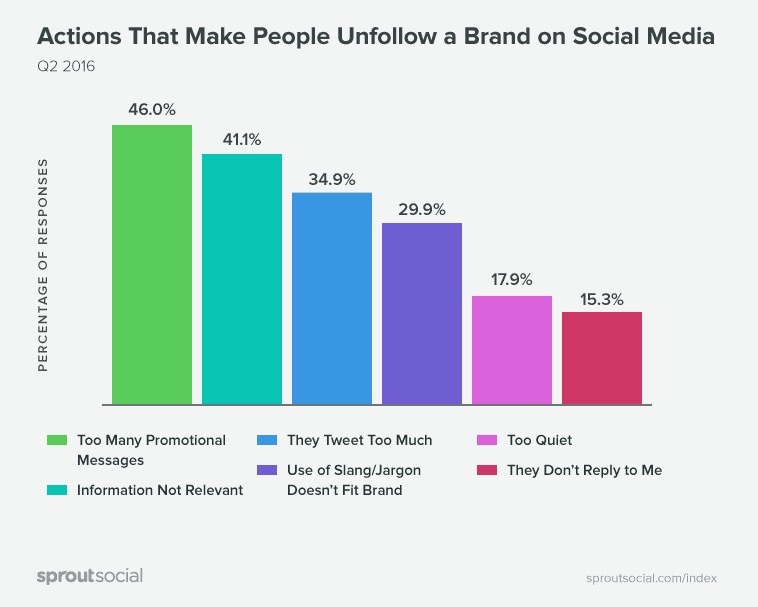
Source: SproutSocial
If you want to effectively communicate your brand online the easiest thing to do, and at the same time the hardest thing to do, is to step out of your own bubble and put the customer at the center. Even if you’re a small company now, it’s important to translate your passion and idea into your brand image and focus on building long-term and valuable relationships that will make your brand grow.
And in order to do it, you need marketing precision to cut through the digital noise and reach the right audience.
Before you start choosing the best communication channels for your brand, first define your ideal customer. Ask yourself where your customers are, how they come into contact with your brand and what they have to do to decide on your product?https://9e2fe0104ebd6d97eeba1f8129c7217f.safeframe.googlesyndication.com/safeframe/1-0-38/html/container.html
This is your starting point for brand communication strategy, and never ever should be overlooked. Your marketing communication must be tailored to your customers needs and you cannot do it, if you don’t know who your potential customers are.
Here is a great article from Buffer that will help you design your own customer persona.

Source: Buffer
If you know who your customers are, you can now discover how they spend their time online. Leverage the data you already have. Look through your Google Analytics to uncover how certain customers found your product, how they are consuming your content, what the sources of traffic for your website are, what their buying patterns are, etc.
Tracking data in Google Analytics will tell you the traffic sources and the keywords your customers used to land on your webpage. Not only will you discover your customers intents, but also you will be able to craft the content with the right use of language and incentives based on the queries your customers use to find you.
Social media platforms serve as a source of information for many of us and your customers are there for sure. With plenty of social media platforms to choose from you can be a “social butterfly”, but should you attend every social party? Being everywhere simply because everyone else is on the bandwagon is not worth your time and money.
This may seem like a no-brainer, but really do your research here as well. Every social media channel has its own demographics and allows businesses to tell their brand story in a different way.Facebook still rules the world of social media platforms, with over 1,870 million active users, it holds an 18% market share.
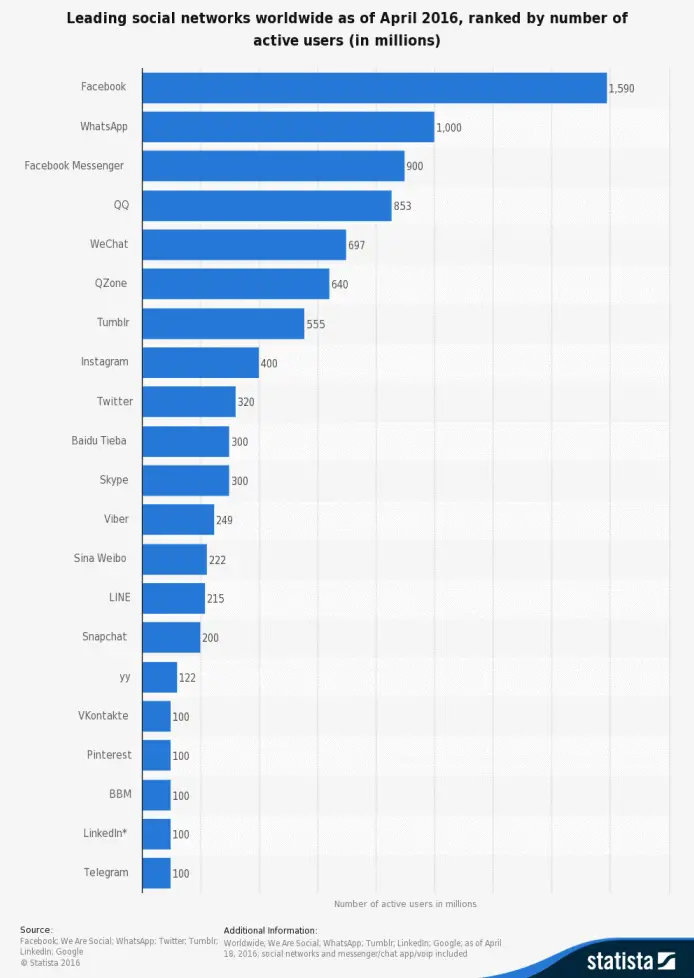
Source: Statista
But it’s not only the number of users that is interesting from the brand point of view. The engagement of the audience will determine the time you put into social media marketing.
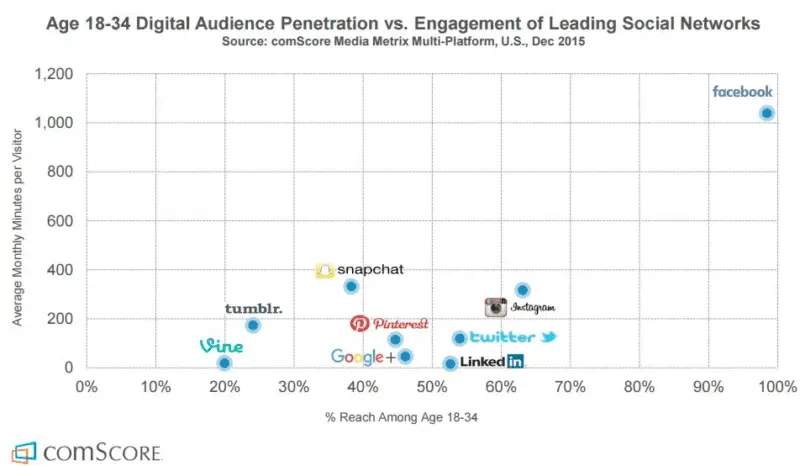
Source: comScore
And the demographics will tell you which social media platform fits your business needs best.
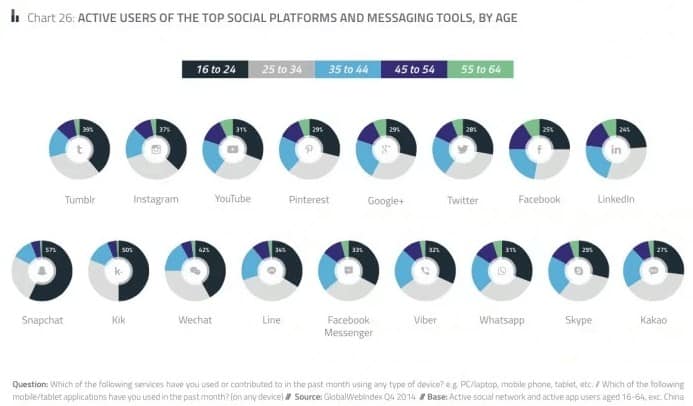
Source: SmartInsights
When you’ll be choosing the social media channels you want to be the most active on, also remember and think about what type of business you have and what type of content you want to use to engage your audience. If you want to focus on quality visual content, beautiful pictures and video, maybe Instagram or Pinterest will be better for you than Facebook or Twitter. You should adapt your brand communication strategy to match individual social media channels.
https://9e2fe0104ebd6d97eeba1f8129c7217f.safeframe.googlesyndication.com/safeframe/1-0-38/html/container.htmlIn today’s complex digital world, seamless customer journeys build solid, mutually beneficial relationships between brand and customer. Email marketing fits into every stage of your marketing and sales funnel and helps you foster relationships with your subscribers.
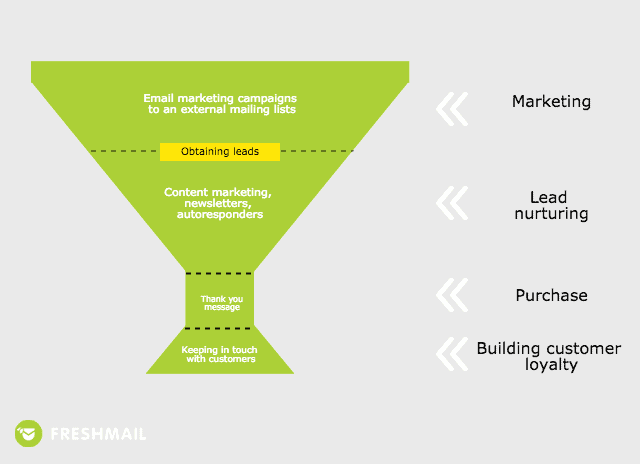
Source: FreshMail
Email subscribers are a chunk of your online community that has to be really well taken care of. These are your website visitors who decided to share their contact information with you and stay in contact with your brand. Email promises your brand two important things. First of all, your voice is heard by the people who actually want to hear from you. Second, your marketing communication is effective.
The reach
Your customers are checking their email daily. They do so while watching tv, being tucked into bed, commuting, or even attending formal ceremonies!
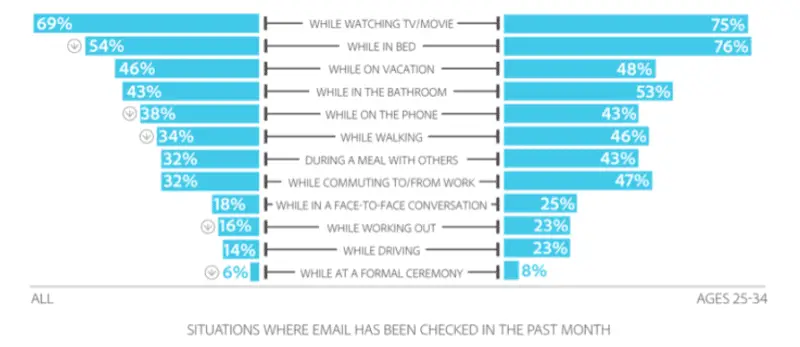
Source: Adobe
And they check their email multiple times a day! Despite the peak time for campaigns sent being a time window between 9:00 and 11:00am, the distribution of opens and clicks is rather continuous during the 24 hours.
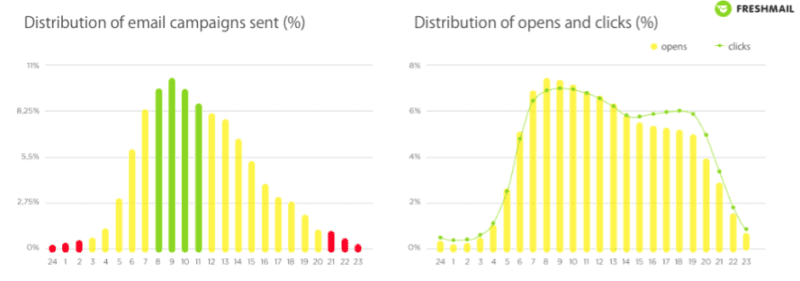
Source: FreshMail
Consumers prefer to receive email communication from brands and this translates directly into their purchasing behaviour. In Q1 of 2016 email marketing drove 18.4% of purchases, up from 15.5% during the same timeframe in 2015.
To benefit from the promises email offers your communication it has to rely on honesty and transparency. If you succeed in generating trust among your email subscribers they will engage with you and ultimately spend with you. Because the ultimate goal of your marketing communication is to move the customer or prospect from interest to acquisition.

A strong brand communication strategy is a long term investment.

Color is so much more than meets the eye. In fact, color is one of the most important aspects of your marketing.

Do you want to know about the psychology of logo design? You’re in the right place.
No account yet?
Create an Account